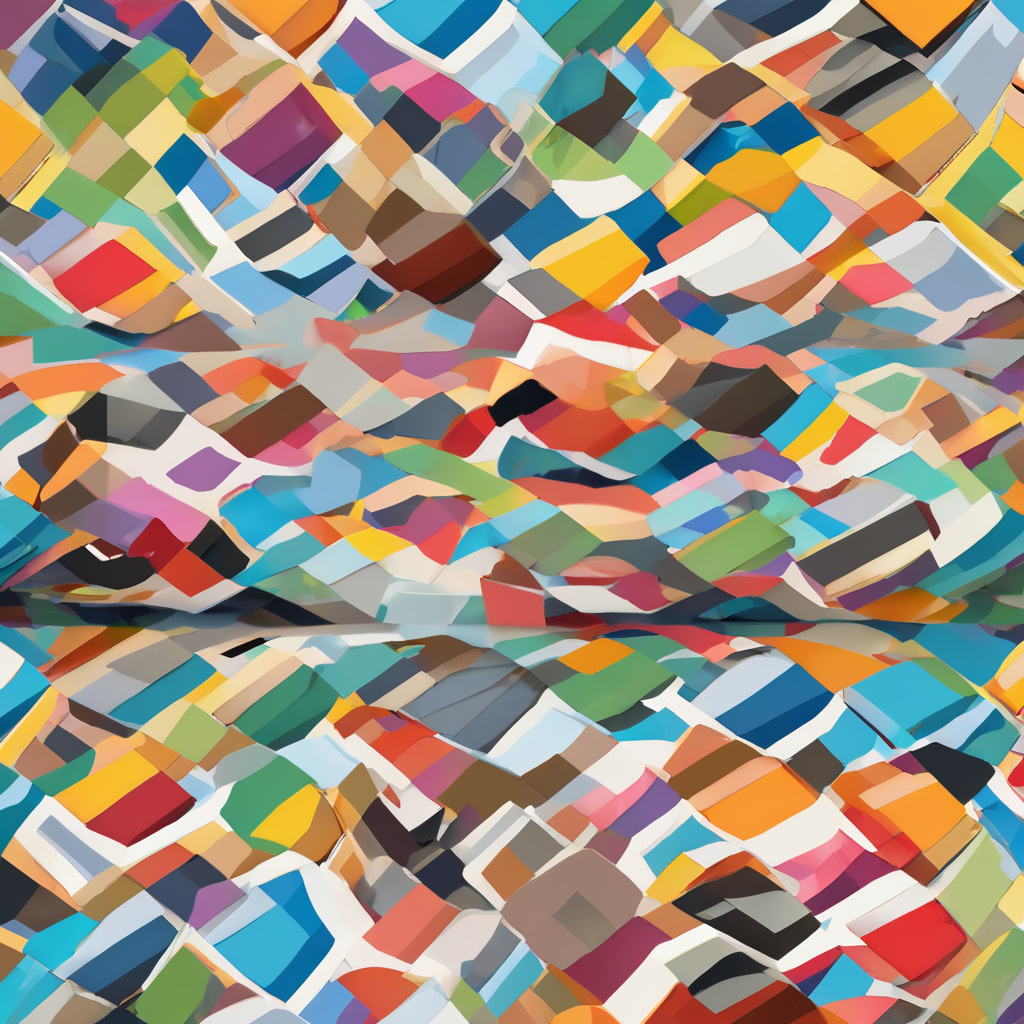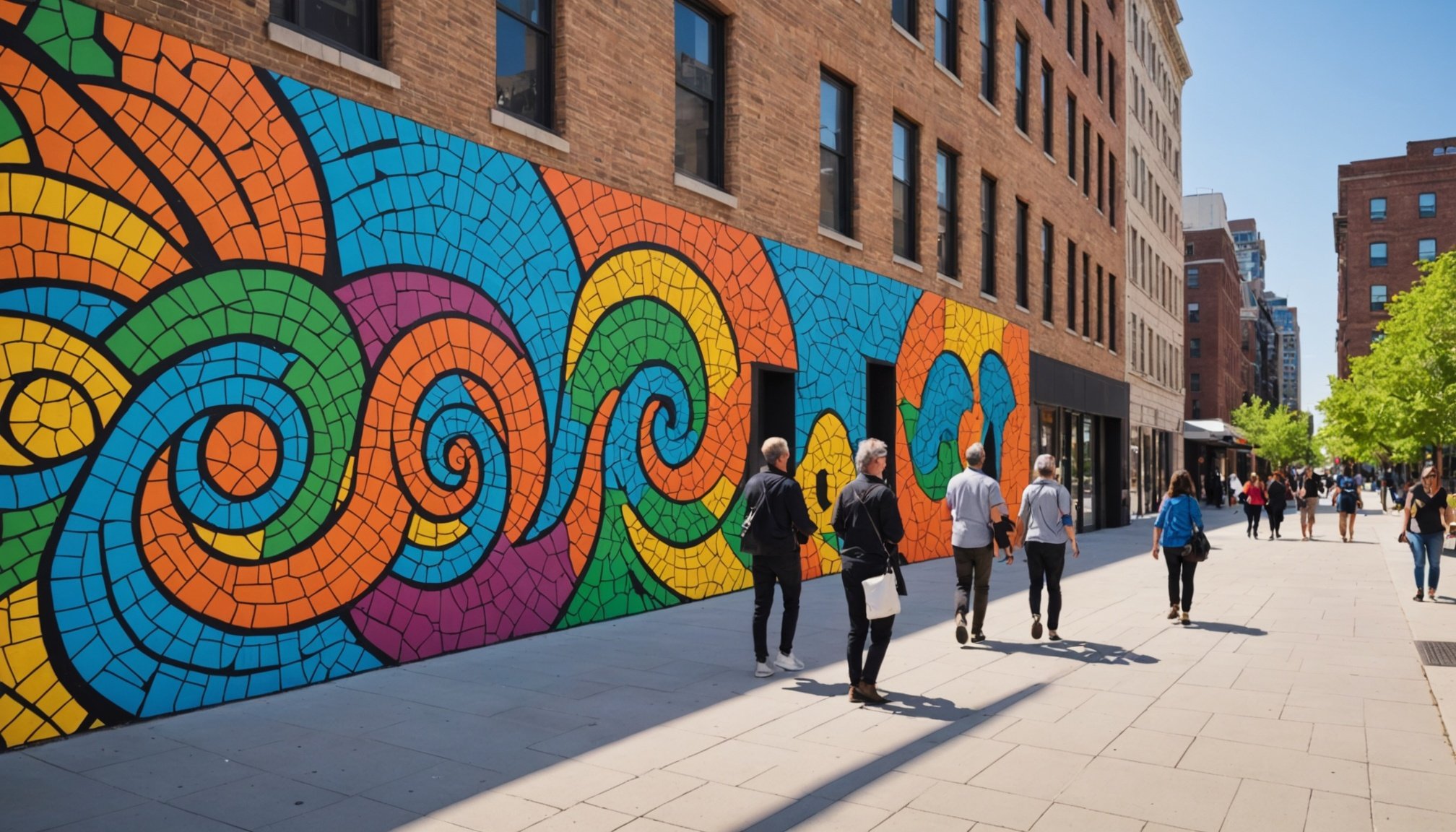Unifying Spaces: Innovative Approaches to Integrate Public Art in New Development Initiatives
In the ever-evolving landscape of urban development, the integration of public art has emerged as a powerful tool to transform and unify public spaces. This approach not only beautifies cities but also fosters community engagement, social cohesion, and a deeper sense of cultural identity. Here, we delve into the innovative methods and benefits of incorporating public art into urban development initiatives.
The Role of Public Art in Urban Development
Public art is no longer just a decorative element; it has become a crucial component in urban planning and development. It serves as a catalyst for community engagement, social cohesion, and economic growth. Here are some key ways public art is reshaping urban spaces:
Also to discover : Illuminating the Path to Sustainability: A Comprehensive Guide to Energy-Efficient Lighting for Large UK Commercial Properties
Eco-artistic Installations and Urban Nature Integration
The fusion of art and ecology is a trending theme in urban development. Projects like Agnes Denes’ “Living Pyramid” in the Coachella Valley exemplify how large-scale art installations can highlight environmental themes and integrate natural elements into urban spaces. This approach not only enhances the aesthetic appeal of cities but also promotes sustainable development and urban nature integration[1].
Public Art Revitalization and Brand Urbanism
Deutsche Bahn’s initiative in Berlin is a prime example of how public art can revitalize public spaces and foster community bonds. By collaborating with local artists, Deutsche Bahn transformed metro stations into vibrant landmarks that reflect the history and culture of their respective neighborhoods. This “brand urbanism” movement demonstrates how companies can work with cities to address urban challenges through art, reducing issues like “Angstraum” (fear of space) and graffiti, while enhancing social cohesion and neighborhood aesthetics[2].
Additional reading : Discover effective strategies for developing eco-friendly tourism destinations
Community Engagement and Social Cohesion
Public art projects have a profound impact on community engagement and social cohesion. Here are some ways these projects achieve this:
Increased Collective Efficacy
Research from the Yale University School of Medicine highlights the benefits of public art installations, such as increased collective efficacy among residents. For instance, the mural installations in Berlin’s metro stations, created by artists like Kera, Falk Land, and Guillermo S. Quintana, have been shown to enhance social cohesion, trust among neighbors, and informal social control. This suggests that public art can play a significant role in fostering stronger, more connected communities[2].
Cultural and Artistic Events
Grand-scale art exhibitions and cultural events are becoming increasingly important in attracting tourists and enriching community engagement. Events like Desert X and the public art projects curated by UAP in partnership with international curators showcase the transformative power of public art. These projects inspire connection, dialogue, and a deeper sense of belonging among community members[1][4].
Sustainable Development and Urban Planning
The integration of public art with sustainable development goals is a key aspect of modern urban planning.
Environmental Design and Urban Greening
Public art projects are now incorporating environmentally friendly materials and urban greening initiatives. For example, Diana Lelonek’s “Reed Field” in Warsaw, which doubles as a rain garden, not only beautifies the space but also contributes to the local ecosystem. This approach adds a new dimension to urban cultural narratives, emphasizing the importance of sustainable development in urban design[4].
Broad Curatorial Thinking
The concept of “broad curatorial thinking” is gaining traction, where curators act as cultural translators, connecting diverse fields of the city to enhance local cultural scenes. Ann-Marie Richard from the Sotheby’s Institute of Art emphasizes how public art can guide viewers to experience the external world intuitively, fostering a deeper connection between humans and their environment. This approach transcends traditional curatorial exhibitions, integrating into urban planning, community construction, and daily life[3].
Creative Approaches and Site-Specific Projects
Public art projects are becoming increasingly creative and site-specific, reflecting the unique characteristics of their surroundings.
Examples of Innovative Public Art
- Felipe Pantone’s OPTICHROMIE: This mural in Jersey City is a dynamic interplay of vibrant lines and gradients, transforming the city’s skyline. The project involved meticulous planning and execution, showcasing the creative use of materials and integration with the urban environment[5].
- Jen Catron and Paul Outlaw’s Hot Dog in the City: Located in Times Square, this installation brings humor and levity to one of the world’s most iconic urban places. It exemplifies how public art can fit perfectly into its environment while standing out as a unique and engaging piece[4].
- Callum Morton’s In Through the Out Door: In Sydney, Morton transformed back entrances of city buildings into immersive mosaics, responding to iconic Sydney patterns and colors. This project elevates peripheral spaces into site-specific portals of curiosity, enhancing the urban aesthetic and user experience[4].
Practical Insights and Actionable Advice
For urban planners, developers, and community members looking to integrate public art into their projects, here are some practical insights and actionable advice:
Collaborative Approach
- Collaborate with Local Artists: Working with local artists, as seen in Deutsche Bahn’s initiative, ensures that the art reflects the community’s history and culture, making the project more meaningful and engaging[2].
- Involve Community Members: Engaging community members in the planning and execution process can foster a sense of ownership and increase social cohesion. This can be achieved through public consultations, workshops, and community events[2].
Sustainable Materials and Practices
- Use Environmentally Friendly Materials: Incorporating sustainable materials and practices into public art projects not only aligns with urban sustainable development goals but also enhances the project’s longevity and environmental impact[3][4].
Site-Specific Design
- Understand the Site: Public art should be designed with the specific site in mind. This ensures that the art integrates seamlessly with its surroundings, enhancing the overall urban design and user experience[4].
Table: Comparative Analysis of Public Art Projects
| Project Name | Location | Key Features | Impact |
|---|---|---|---|
| Living Pyramid | Coachella Valley | Eco-artistic installation, urban nature integration | Highlights environmental themes, promotes sustainable development |
| Deutsche Bahn Metro Stations | Berlin | Local artists, historical and cultural reflection, social cohesion | Reduces “Angstraum,” enhances neighborhood aesthetics, fosters community bonds |
| Reed Field | Warsaw | Rain garden, urban greening, commemoration of Jewish Kibbutz | Contributes to local ecosystem, enhances cultural heritage |
| OPTICHROMIE | Jersey City | Dynamic mural, creative use of materials, skyline transformation | Aesthetic upgrade, community engagement |
| Hot Dog in the City | Times Square, NYC | Humorous installation, public programming | Brings levity, enhances urban experience |
| In Through the Out Door | Sydney | Mosaics, site-specific design, urban aesthetic enhancement | Elevates peripheral spaces, enhances user experience |
Quotes from Experts and Artists
- Ann-Marie Richard, Dean of the Sotheby’s Institute of Art: “Public art not only serves as a decoration for physical space, but it guides the viewer to experience the external world intuitively. The spiritual layers contained in the work touch the viewer’s inner perception through textures, brushstrokes, and colors, triggering personal and healing emotions.”[3]
- Charlotte Specht, Basa Studio co-founder: “The professionalism and expertise demonstrated by all three artists throughout the projects cannot be overstated. Their ability to consult with architects, building managers, project coordinators, and many others—both on-site and off—made the whole process incredibly smooth and ultimately successful.”[2]
- Natasha Smith, Curatorial Director of UAP: “This year’s list of nominated artworks packs a political punch—a trend that continues from recent years. The work encourages timely discourses and inspires us to engage in this important field of public art.”[4]
Looking to the Future
As we look to the future of urban development, the integration of public art is set to play an increasingly vital role. Here are some trends and insights that will shape the future of public art in urban spaces:
Cross-Cultural Art Curation
The integration of public art with cross-cultural curation is expected to become more prominent. This approach will help build bridges between diverse fields, activate public awareness, and connect the past and future, local and global, individual and collective[3].
Sustainable Development Goals
Public art projects will continue to align with sustainable development goals, incorporating environmentally friendly materials and urban greening initiatives. This will not only enhance the aesthetic appeal of cities but also contribute to their ecological health[3][4].
Community-Led Initiatives
Community-led initiatives will become more prevalent, ensuring that public art projects reflect the needs and aspirations of the local community. This collaborative approach will foster a sense of ownership and increase social cohesion among community members[2].
In conclusion, the integration of public art in new development initiatives is a powerful strategy for unifying urban spaces, fostering community engagement, and promoting sustainable development. By adopting a collaborative, site-specific, and sustainable approach, cities can transform their public spaces into vibrant, culturally rich, and socially cohesive environments that benefit both residents and visitors alike.

